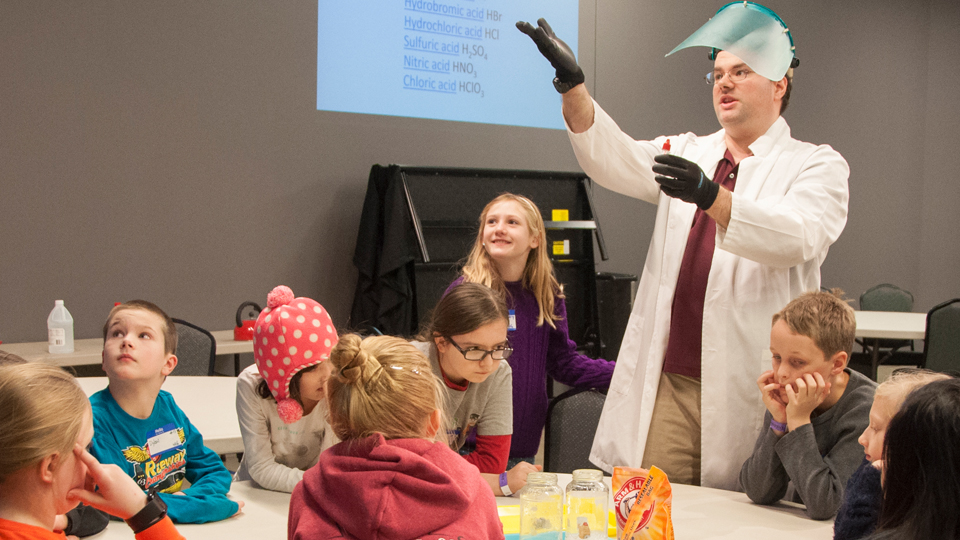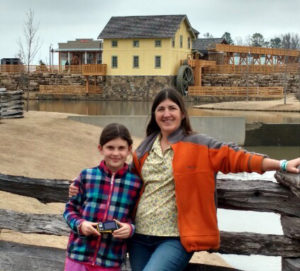May 22, 2020 – Discovery Park of America is excited to team up with the Tennessee Naturalist Program to offer courses focusing on the nature in the state, instilling an appreciation of responsible environmental stewardship and channeling volunteer efforts toward education of the general public and conservation of Tennessee’s natural resources.
Recently, we sat down with Kayce Workman, Discovery Park’s aquarium and wildlife assistant director and asked her a couple of questions about the program.
What is the Tennessee Naturalist Program?
This program is set up to teach participants about the natural world around them. It also works to inspire a desire to continue learning and helps to instill an appreciation of responsible environmental stewardship. The program works to build a volunteer community that tries to educate the general public and help conserve our natural resources.
The mission of the Tennessee Naturalist Program is “inspiring the desire to learn and share Tennessee’s nature.”
This program is excellent for adults 18 and older that are interested in the natural history of our state and want to expand their knowledge. Our chapter will cover ten topics that touch on all aspects of the natural history of northwest Tennessee with the diverse Reelfoot Lake being one of our focal points.
What are some of the topics covered in this program?
The Tennessee Naturalist Program is an amazing set of courses that cover every aspect of Tennessee’s natural history. Participants start out with lessons that will discuss skills, tasks, tools and resources needed to be a naturalist. They will learn the aspects of interpretation and proper programming principles and techniques. The courses will cover the wildlife, plants, trees, fungi, water systems, geology, ecology and astronomy of northwest Tennessee. During the course of the program, participants will also learn about volunteer opportunities and meet professionals in the field.
Where do all the participants travel to during the course of this program?
Participants will spend in-class sessions at Discovery Park of America, Reelfoot National Wildlife Refuge visitor center and the University of Tennessee at Martin Environmental Field Station. The class will then leave these locations and explore the varying and fascinating areas of the Reelfoot Lake ecosystem and the University of Tennessee at Martin campus that is home to a large variety of Tennessee native trees.
Discovery Park of America will provide transportation starting at the park and returning when the class ends. During the current global pandemic we will be taking social distancing into account.
What are you looking forward to while facilitating the Tennessee Naturalist Program here at Discovery Park of America?
When I first started looking into this program, I was excited that the Tennessee Naturalist Program’s mission was directly in-line with our mission at Discovery Park. I can’t wait to meet people around the area who have an appreciation for Tennessee’s natural history and want to continue to see beyond. I hope to utilize their passion and knowledge of Tennessee through special programming at Discovery Park, as well as local state and federal parks, schools and libraries. Hopefully we will build a community of nature enthusiasts who will work together to educate generations to come!
What advice do you have for someone who is considering signing up for this program?
This program is full of excellent material and led by professionals in the field. It will be extremely beneficial for anyone wanting to expand their knowledge and give back to their community and environment. I would advise all participants who sign up to actively participate in each of the classes and ask plenty of questions. The teachers lined up for the classes are very knowledgeable and enjoy sharing their passion with others. Anyone who is interested in participating should be enthusiastic and prepared to put in 40 hours of course work throughout a 9 month period and 40 hours of volunteer service that can be accumulated throughout the time period of the classes, and an additional 12 months after the final class to be fully certified as a Tennessee Naturalist.
Registration Information
The classes are open for adults ages 18 and older will be held on Saturday mornings beginning Aug. 29, 2020 at 8 a.m. and Discovery Park’s health and safety guidelines for guests will be in effect. The 10 classes are limited to just 20 participants and costs $250 for all 10 days and all class materials. A schedule of classes with more information is located at DiscoveryParkofAmerica.com/TNP and registration will open on the TNP website on June 1, 2020.
For answers to questions, contact Kayce Workman at kworkman@discoveryparkofamerica.com or 731-885-5455, ext. 1154.
Discovery Park of America is strictly following all recommended health and safety guidelines for employees and guests.



